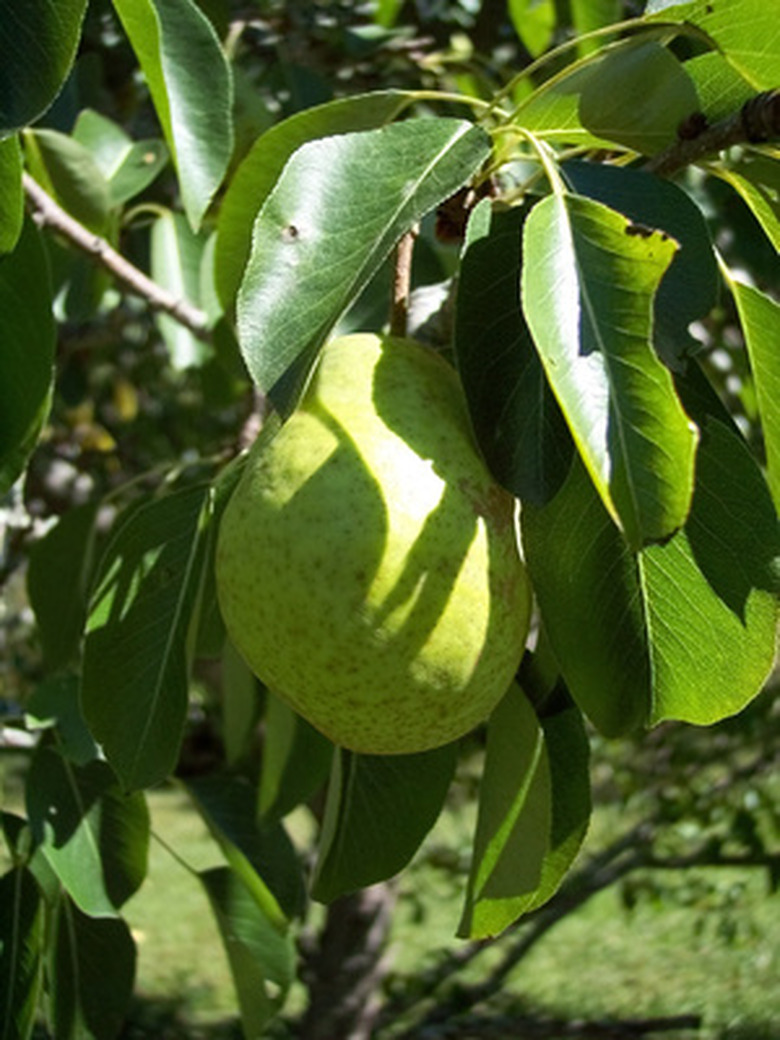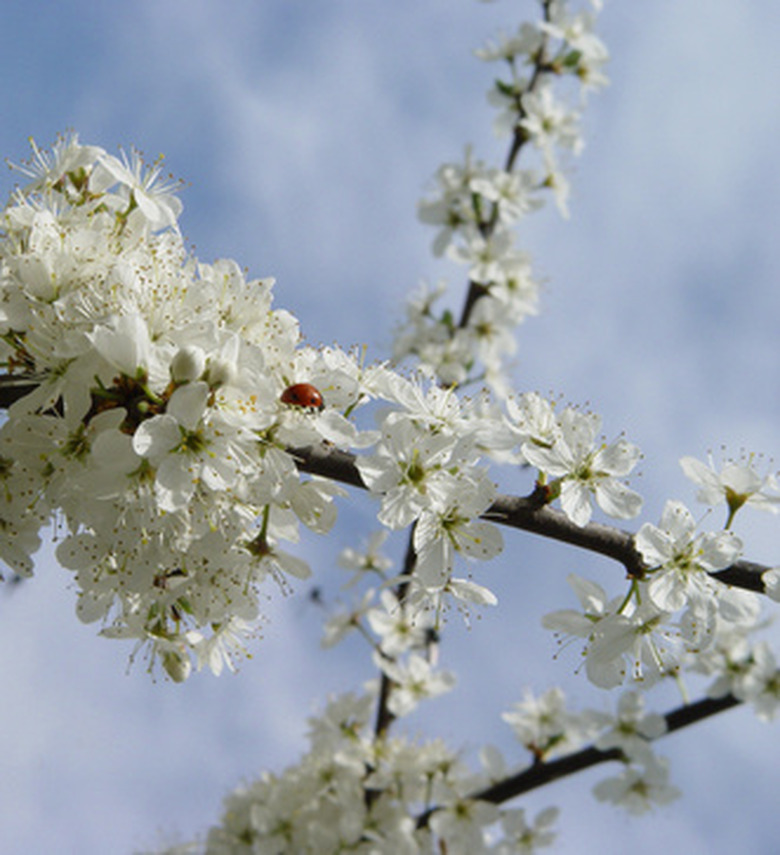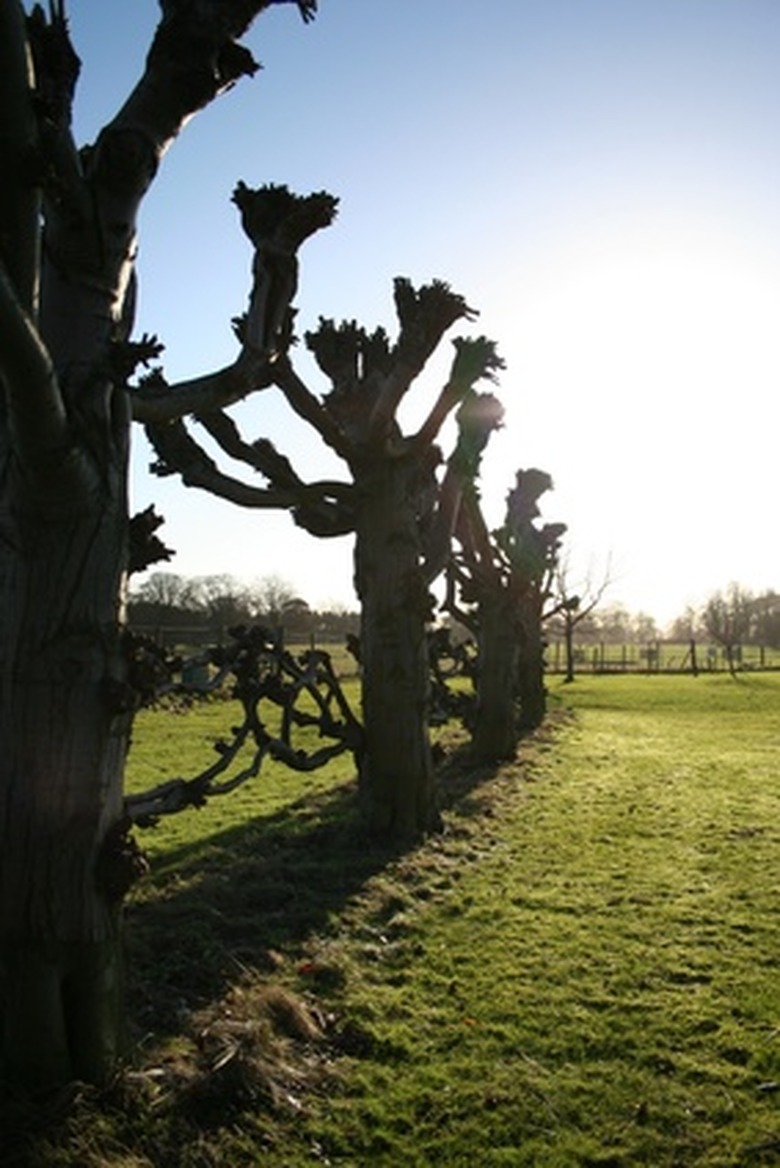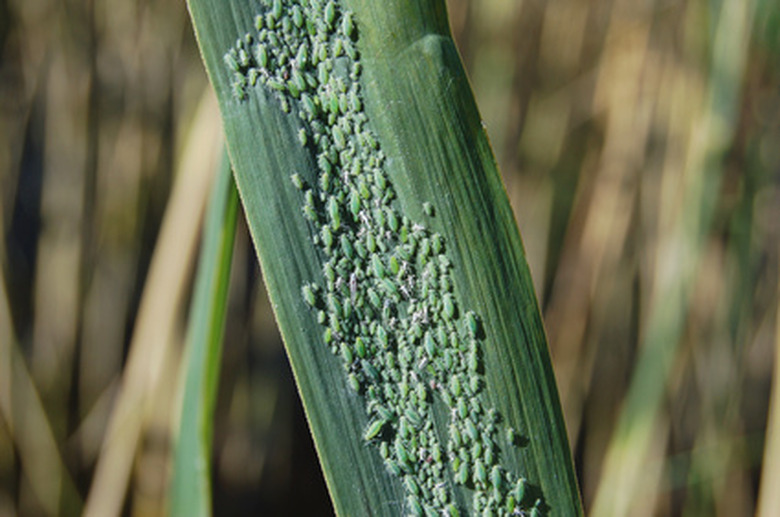How To Care For A Pear Tree In Winter
Most pear varieties are not as cold-tolerant as apple trees, withstanding only infrequent drops in temperature down to minus-15 degrees Fahrenheit. Late spring frosts and freezes can threaten your pear crop, so you'll need to take special measures to protect your pear tree's tender flower buds in late winter and early spring. Winter is also the time for a variety of maintenance and care tasks for your pear tree, including pruning, pest prevention and disease protection.
Step 1
Run a sprinkler beside your pear tree to keep the tree from freezing during late-winter frosts. Cover the tree at night with a light blanket to protect the pear tree, if the flower and leaf buds have already emerged. Remove the blanket during the daytime.
Step 2
Prune your pear tree in mid to late winter each year, removing all damaged or damaged growth, watersprouts, suckers and any branches that are low-hanging or touching the ground, crossing or growing inward. Prune away all lateral growth to maintain the strongest "scaffold" branches on either side of the trunk.
- Most pear varieties are not as cold-tolerant as apple trees, withstanding only infrequent drops in temperature down to minus-15 degrees Fahrenheit.
- Run a sprinkler beside your pear tree to keep the tree from freezing during late-winter frosts.
Step 3
Cut away all over-wintering cankers on your pear tree that result from fire blight. Cut away all of the diseased tree tissue, as well as 6 inches beyond the infected growth to leave only healthy, disease-free wood.
Step 4
Stop fertilizing your pear tree in midsummer to allow the tree to harden off and prepare for the dormant winter season. Also cut back on any nitrogen fertilizers that you're applying the surrounding lawn or landscape.
Step 5
Spray your pear tree with a dormant horticultural oil in late winter, just before bud-break, to kill off any over-wintering scales, mites and aphids. Follow the application directions on the label.
Step 6
Rake away all fallen leaves and remove all old fruits from your pear tree throughout the fall and winter. Rake up and destroy all the leaves to control the spread of fungal diseases, such as pear scab, powdery mildew, fire blight and pear trellis rust.
- Cut away all over-wintering cankers on your pear tree that result from fire blight.
- Spray your pear tree with a dormant horticultural oil in late winter, just before bud-break, to kill off any over-wintering scales, mites and aphids.
Tip
Disinfect your pruning tools when you're cutting away diseased wood from your pear tree. Dip the pruning tools into a mixture of one part bleach to nine parts water for about 30 seconds.
Warning
Avoid planting your pear tree in areas that receive frequent spring frosts or where winter temperatures are often below minus-15 degrees Fahrenheit. Pears bud and flower early in the season, so late frosts can severely damage the fruit crop.
Things Needed
- Garden hose
- Sprinkler attachment
- Light blanket
- Pruning tools
- Dormant horticultural oil
- Garden rake
- Household bleach



